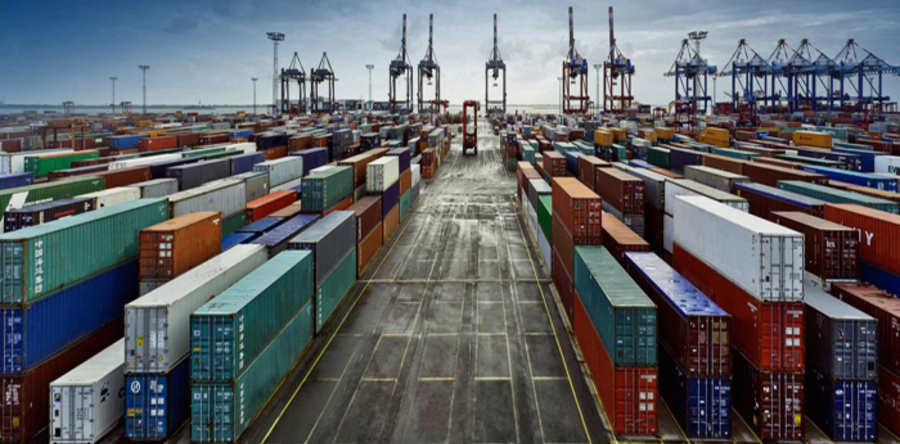In many countries, a generic analysis of foreign trade can present more questions than it answers. Economies with multiple areas of activity, can perform well in some sectors, and underperform in others, making it difficult to discern general themes. In nations, such as Mongolia, where a large proportion of its trade with third parties derives from the mining sector, its performance should provide a clearer indication of overall vitality and prospects, both short and medium term.
Mongolia’s mineral endowment has often been perceived as both a blessing and a curse. On one level, extraordinary, still underexplored, resources next to large captive markets should be a boon to economic growth. It was this theme that led to explosive economic growth and nicknames such as ‘Ulaan Qatar’ and ‘Minecolia’. Optimistic analysts claimed there was a seemingly inexorable path toward improved living standards and economic development. In practice- as is now well documented- stewardship of the public finances in the boom era had a direct bearing on future performance.
So it is with caution we now approach figures as to relative performance. Whilst it is true the IMF package of 2017 led to improved probity, it did not meaningfully rebalance the economy. This said, with Rio notionally back in business at Oyu Tolgoi (OT), it is an appropriate time to unpack the recent update from the National Statistical Office (NSO) of Mongolia and what it means for 2022 and beyond. Table 1 shows the most recent figures as to total exports.
Figure 1

As reported by the NSO, the total value of Mongolian exports in January-February 2022 amounted to US$1.2bn. There was a 18% increase month-on-month, which was nearly double the increase reported in 2021. This said, it represented a decrease of nearly 12% in total compared with the corresponding period of the preceding year. Comparatively speaking Mongolia saw an increase in its overall imports affecting its trade balance. Indeed, this meant the overall trade surplus in January-February amounted to US$142m, significantly down relative to 2021.
As ever, Mongolian trade was predominantly with China, with a total of 52% of the overall trade turnover occurring with its southern neighbour. Isolating exports, Mongolian reliance on China fell in January-February 2022 as compared with the same period of the preceding year. In the first two months of 2021, China accounted for nearly 92% of total exports, compared with 73% in 2022. The difference can, in part, be explained by much greater trade with Switzerland, that saw its percentage of the total increase from 0.1% to 21.9%. The main contributory factor, here, seems to have been a significant uptick in the export of unwrought gold to the Swiss, which accounted for nearly all of its total. China’s meanwhile was skewed toward coal (35%) and copper concentrates (51%). At a macro level, a US$122m decrease in coal exports year-on-year explains why performance was inferior.
Figure 2 & 3

As Figures 2 and 3, show there was a significant decrease in the export volume of both coal and copper in the period January-February 2022 relative to the same period of 2021. This will inevitably concern policy makers in Ulaanbaatar, however, in the case of coal there have been severe logistical issues brought to bear (both regulatory and infrastructural) which have had negatively impacted performance. Though there has been a recent rally in the coal price, it has been insufficient to offset the drop in the overall volume of exports. What is striking, however, is in spite of the drop in copper exports year-on-year, pricing has enabled the overall aggregate value to increase marginally over the period. February 2022, for instance, saw the value of copper exports hit US$266m compared with US$242m in the preceding year, helping compensate for underperformance in January.
Looking at these two important commodities, therefore, presents a nuanced picture. Perhaps unsurprisingly given the turbulence and uncertainty in the world brought by the pandemic and conflict in Ukraine, though, is the impressive outperformance of gold. As Figure 4 shows, there has been a marked increase in volumes, reflected in values where there has been a ten fold increase in exports (worth nearly US$259m) leaving Mongolia in the first two months of this year.
Figure 4

Having begun this article stating a resource-drive economy like Mongolia should present for easier analysis, the facts begin to muddy the water. With experience of Mongolian realities, however, it begins to cohere. Coal has long been seen as a short term fix to tide the country over whilst further copper development has been in gestation. Gold has always occupied a rear-guard position, where hopeful analysts have pointed to its potential, which has not always delivered. Taking this together -and with OT looking more likely than ever- there is much space for optimism, however. If gold maintains momentum, and copper accelerates, Mongolia could find itself as one of the most sought after producer’s of today’s most valuable assets. Coal has a limited shelf life and an economy anchored in copper and gold offers a better chance of exciting investor attention. The Mongolian story has been written (and re-written) so many times. Its prospects overinflated and cruelly dismissed. But there’s a buzz returning to the mining sector, and with it hope for Mongolia’s sustainable development.

